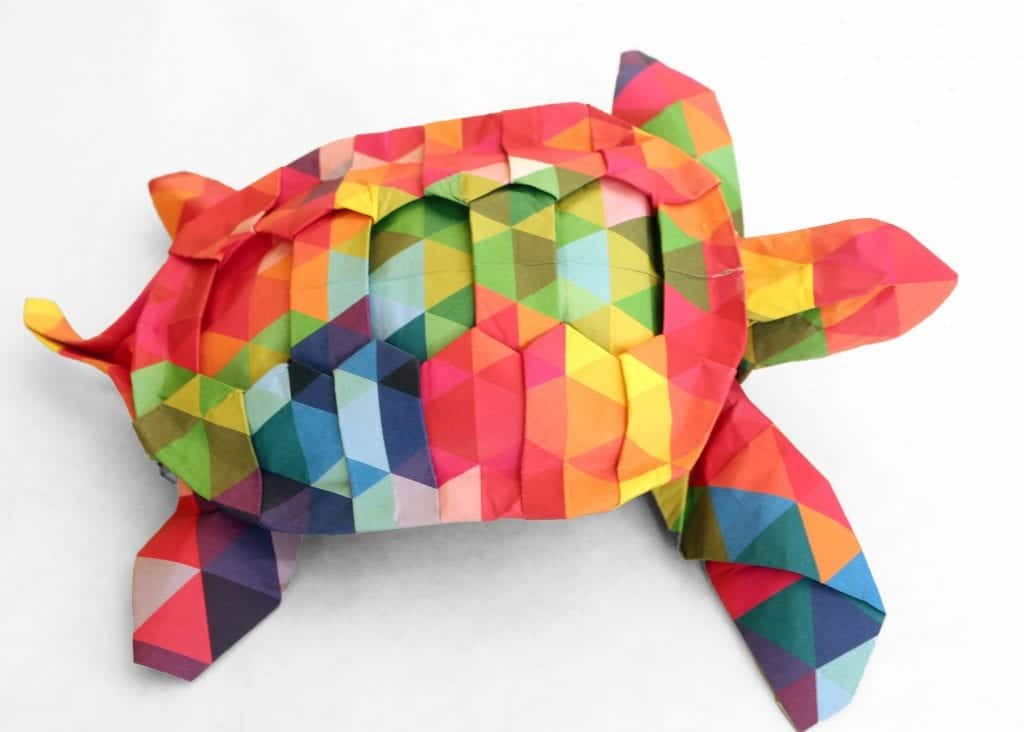
Today we will talk to you about the benefits of origami or origami. Technically they are not the same, but different techniques. But this time as both techniques are very fun and produce the same benefits we will say that they are synonymous.
Being strict, origami is the Japanese art of folding and unfolding a paper with the help of the hands to form a figure, without cutting it or using glue. And in origami they do let you do it.
Benefits of origami in children

Origami is suitable for all ages, but It is recommended that children begin to develop it from the age of five. It is from this age that they have enough fine motor skills and can make simple figures, such as boats, airplanes, bow ties ...
It is proven that origami develops concentration and therefore relaxation. While your sons and daughters play to make shapes with it, we assure you that they will be focused, it is the only way to achieve the desired figure. The fact of being attentive and will make them forget about the rest of things. Practicing this art will help them when they are older to find in it a way to relax.
At once increases memory, because there are really complex figures in which you have to remember how you get to the end. Also encourages creativity, when they are the smallest of the house those who practice it develop a capacity to create what they imagine. Their creativity will grow and they will be able to shape the figures on paper. As if this were not enough, it benefits the hand-eye coordination, which will give you greater dexterity.
One of the qualities or characteristics of origami is that develop patience and perseverance. No figure, no matter how simple, comes out the first time. In this way, your children will learn from their mistakes, and will try again until they succeed. A whole teaching.
Origami and mathematics

Yes, although the title may surprise you, both things are related. One of the proven benefits of origami is that improvement of mathematical understanding through geometry.
The folds that are made in the paper do not stop being symmetry and geometry operations. To make you even more amazed, we will tell you that there are published studies on how to solve third degree equations through origami, that is, simply by folding paper. As if this were not enough, there are specific theorems and hypotheses for origami, such as Maekawas's and Kawasi's theorem.
We recommend that you take a look at a blog that deals with math issues in a transversal way, giving a didactic approach. For this use as recreational math and origami tool. So if your son or daughter has difficulty with this subject, keep the data.
Simple figures to get started
We propose you to do four simple paper animal figures With which you can start practicing with your children, if you had not started in this art before. We also indicate the material you need.
- Face of little pig. You need a square paper of two colors. The most realistic is pink and white. In just six steps you will get the face of the pig. Then you will have to paint the muzzle and both eyes.
- El penguin It is achieved in 8 steps, it is made with a square paper that, as in the previous case, to be realistic you can do it in black and white. Once finished you will need a marker to mark the eyes.
- El simple owl It is achieved in 5 steps and it is one of the best figures to introduce children to the world of origami.
- El elephant It is always a charming animal ... with a single defect, its big ears, but you are going to get these too.
Of all these figures you can leave you the video above so that you can consult it on YouTube.